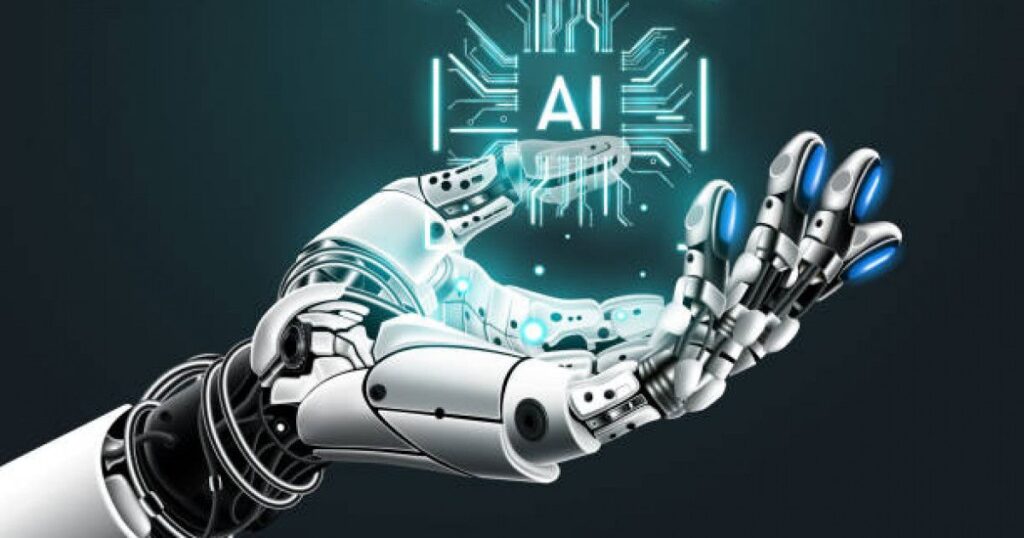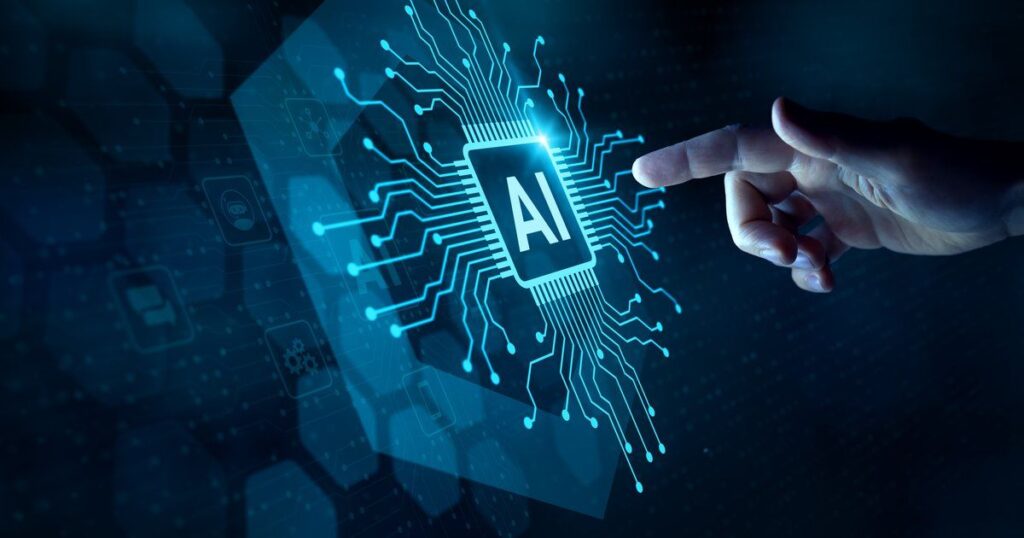The rise of Artificial Intelligence (AI) has changed the way we solve problems and make decisions. From recommending products on e-commerce platforms to diagnosing illnesses in the healthcare sector, AI has proven its value. However, building an AI model is just one part of the process.
The most critical aspect is evaluating the AI model to ensure it performs accurately and reliably. This article explores what AI model evaluation is, its importance, and the different methods and metrics used. By understanding this concept, businesses and developers can build AI systems that are trustworthy and effective.
Understanding AI Model Evaluation
The term AI model evaluation refers to the process of assessing how well an AI model performs on a given set of tasks. It involves measuring the accuracy, efficiency, and reliability of the model. The goal is to ensure the AI behaves as expected and meets the requirements set during its development.
- AI model evaluation helps identify errors and weaknesses in the system.
- It provides insights into how the model can be improved.
- The evaluation process is continuous, even after the model is deployed.
Without proper evaluation, an AI model can make incorrect predictions, leading to unwanted consequences.
Why Is AI Model Evaluation Important?
The importance of AI model evaluation cannot be overstated. It ensures that the model functions correctly and provides accurate results. Evaluating AI models is necessary because these systems are used in various sensitive areas like healthcare, finance, and autonomous driving.
- An unevaluated AI model could lead to incorrect diagnoses, financial losses, or safety hazards.
- Regular evaluation helps in maintaining the integrity and reliability of AI systems.
- It also aids in building user trust and confidence.
An AI model for fraud detection must be evaluated to ensure it correctly identifies fraudulent activities without misclassifying legitimate transactions.
Types Of AI Models That Require Evaluation
AI models come in different forms, each designed to handle specific tasks. These include machine learning models, deep learning networks, and natural language processing (NLP) models.
- Machine learning models are used for classification, regression, and clustering.
- Deep learning models are suitable for tasks like image recognition and voice processing.
- NLP models deal with language understanding, translation, and sentiment analysis.
- Evaluate machine learning models for prediction accuracy.
- Assess deep learning models for image and audio processing.
- Test NLP models for language comprehension and response generation.
Key Metrics For AI Model Evaluation

AI model evaluation is based on various metrics that provide information on how well the model performs. These metrics help in identifying the strengths and weaknesses of the AI system.
- Accuracy: Measures the percentage of correct predictions.
- Precision: Determines how many positive predictions are correct.
- Recall: Measures how well the model identifies all the relevant instances.
- F1 Score: Combines precision and recall to provide a balanced performance metric.
Selecting the right metrics is crucial for accurately evaluating an AI model’s performance.
The Role Of Training And Testing Data
The quality of data used to train and test an AI model is vital in the evaluation process. Without good data, even the most sophisticated models can fail.
- Training data helps the model learn, while testing data evaluates its performance.
- It is essential to have diverse and comprehensive datasets to cover different scenarios.
- Poor data can lead to overfitting, where the model performs well on training data but fails in real-world situations.
Ensuring data quality is as important as the model itself.
Evaluation Techniques
There are different techniques used to evaluate AI models, and the most common are validation and testing.
- Validation: During the model’s training phase, a validation set helps in tuning the model’s parameters.
- Testing: After training, the model is tested on a new dataset to assess its accuracy and performance.
Using both validation and testing datasets ensures a balanced and unbiased evaluation.
Cross-Validation
Cross-validation is a popular method for evaluating AI models. It involves splitting the data into multiple parts and testing the model on different parts.
- K-Fold Cross-Validation: Divides the data into ‘K’ parts, using one part for testing and the others for training.
- Leave-One-Out Cross-Validation (LOO-CV): Each sample in the dataset is used as a test case once, while the remaining samples are used for training.
- Ensures the model performs well on unseen data.
- Helps in avoiding overfitting.
- Provides a more accurate evaluation of the model’s performance.
Handling Overfitting And Underfitting
Overfitting and underfitting are common problems in AI models. Overfitting happens when the model learns the training data too well, including noise, and performs poorly on new data. Underfitting occurs when the model fails to capture the underlying trend in the data.
- Overfitting: High accuracy on training data but low on testing data.
- Underfitting: Low accuracy on both training and testing data.
- Evaluating models can help detect and resolve these issues by adjusting the model’s complexity and retraining with different data.
Overfitting is when the model performs well on training data but poorly on new data. Underfitting is when the model fails to perform well on both training and testing data.
Bias And Fairness in AI Model Evaluation

Bias in AI models is a significant issue that can lead to unfair outcomes. Evaluating AI models involves checking for biases and ensuring fairness in decision-making.
- A biased AI model may make incorrect decisions based on gender, race, or other factors.
- It is crucial to evaluate the model to ensure it treats all users fairly.
- Special tools and techniques can detect and reduce bias during the evaluation process.
- An AI system used for hiring must be evaluated to ensure it does not favor candidates based on gender or ethnicity.
Performance Evaluation
Performance evaluation of AI models also involves measuring how quickly and efficiently they process data. This is especially important for real-time applications like autonomous driving or chatbots.
- Evaluating the model’s speed helps in understanding its response time.
- Efficiency ensures that the model can handle large datasets without compromising accuracy.
- It is crucial to balance speed and accuracy for optimal performance.
Faster models may not always be better; accuracy and reliability are equally important.
Stress Testing AI Models
Stress testing is used to determine how well an AI model performs under extreme conditions, such as high data input rates or unusual scenarios.
- It helps in identifying the limits of the model’s capabilities.
- Stress testing ensures that the model can handle unexpected situations without failing.
- This method is especially important for critical applications like healthcare and finance.
Example: A stress test for an AI model used in a hospital could involve simulating sudden spikes in patient data during emergencies.
Real-World Scenario Testing
To ensure AI models work effectively in real-world situations, scenario testing is essential. This involves deploying the model in real-world environments to see how it performs.
- Real-world testing provides insights that lab-based tests cannot.
- It helps in identifying issues that could arise in practical applications.
- Testing the model in real-world scenarios allows developers to make necessary adjustments before full deployment.
- Deploy the model in a controlled real-world setting.
- Observe performance under actual conditions.
- Make necessary changes based on real-world feedback.
Monitoring And Re-Evaluation After Deployment
Even after an AI model is deployed, monitoring and regular re-evaluation are crucial to ensure it continues to perform well.
- Continuous monitoring helps in detecting issues that might emerge over time.
- Regular re-evaluation ensures the model adapts to new data and remains effective.
- This process helps in maintaining the reliability of the AI system over the long term.
AI models need constant updates and re-evaluation to handle changing environments and new data.
Automated Tools For AI Model Evaluation
There are various automated tools available for evaluating AI models. These tools can simplify the evaluation process and save time.
- Automated tools can handle large datasets and perform multiple tests quickly.
- They provide detailed insights into the model’s performance and highlight areas for improvement.
- Tools like TensorFlow, PyTorch, and IBM Watson can help in evaluating different aspects of AI models.
Automation tools make it easier to evaluate complex AI models and maintain high standards.
Challenges in AI Model Evaluation
Evaluating AI models is not without challenges. These include issues related to data quality, bias, and the need for continuous updates.
- Poor data quality can lead to incorrect evaluations.
- Bias in data or algorithms can result in unfair outcomes.
- Regular updates are necessary to keep the AI model relevant and effective.
Challenges include data quality, bias in algorithms, and the need for continuous monitoring and updates.
The Future Of AI Model Evaluation

The future of AI model evaluation involves more advanced methods, including improved automation and better bias detection tools. As AI systems become more complex, the need for robust evaluation methods will grow.
- Future developments may include AI systems that can self-evaluate and adjust.
- Advanced bias detection tools will help in creating fairer AI models.
- Enhanced automation will allow for quicker and more accurate evaluations.
The evolution of AI technology will require continuous advancements in evaluation methods to ensure quality and fairness.
Frequently Asked Questions
What is AI model evaluation?
AI model evaluation is the process of assessing how well an AI model performs on a set of tasks. It measures accuracy, efficiency, and reliability to ensure the model behaves as expected.
Why is AI model evaluation important?
It is important because it ensures the AI model is accurate, reliable, and safe to use. Regular evaluation helps maintain the integrity of the system.
What are the common methods for evaluating AI models?
Common methods include validation, cross-validation, stress testing, and real-world scenario testing. Each method has its own benefits and provides different insights.
What are the challenges in AI model evaluation?
Challenges include data quality issues, bias in algorithms, and the need for continuous updates to ensure the model remains relevant and effective.
Conclusion
AI model evaluation is a critical process that ensures the reliability, accuracy, and fairness of AI systems. It involves various techniques, including validation, testing, and real-world scenario analysis, to assess how well a model performs.
Regular monitoring and re-evaluation after deployment ensure the AI continues to meet the necessary standards. In the future, advancements in evaluation methods will play a key role in the development of more sophisticated AI systems.










